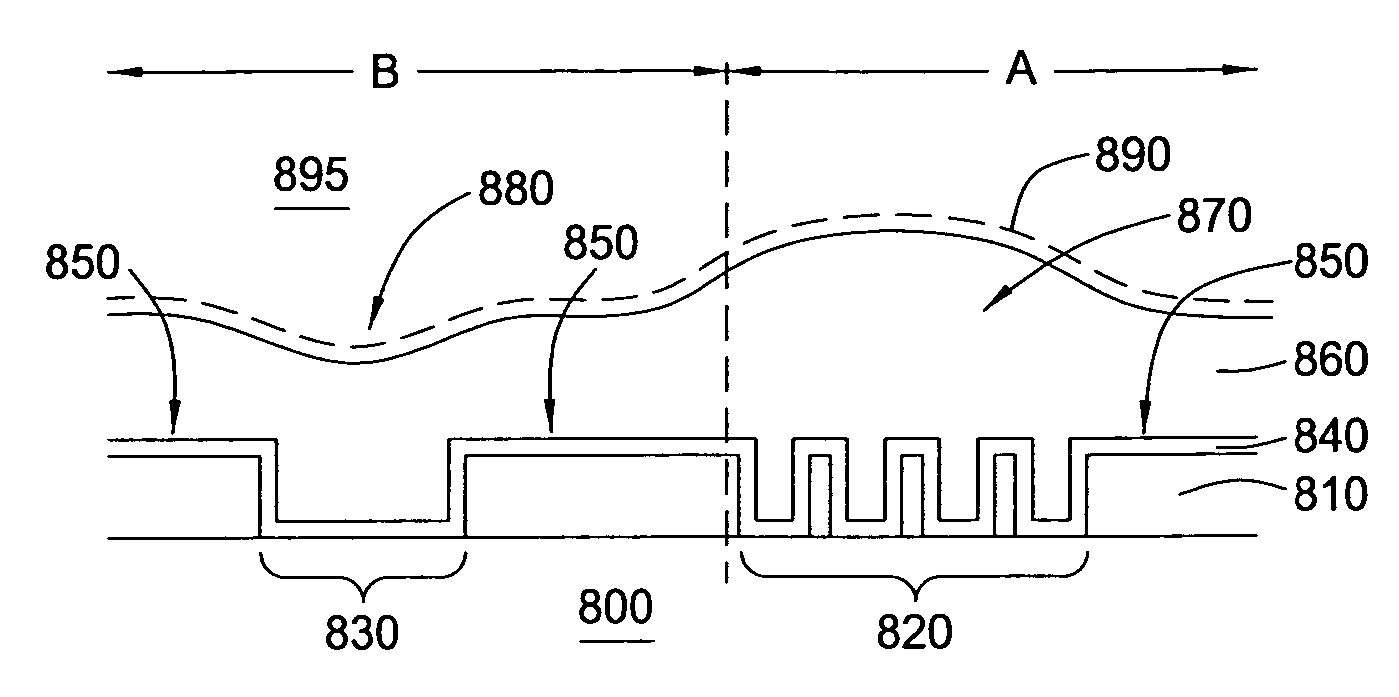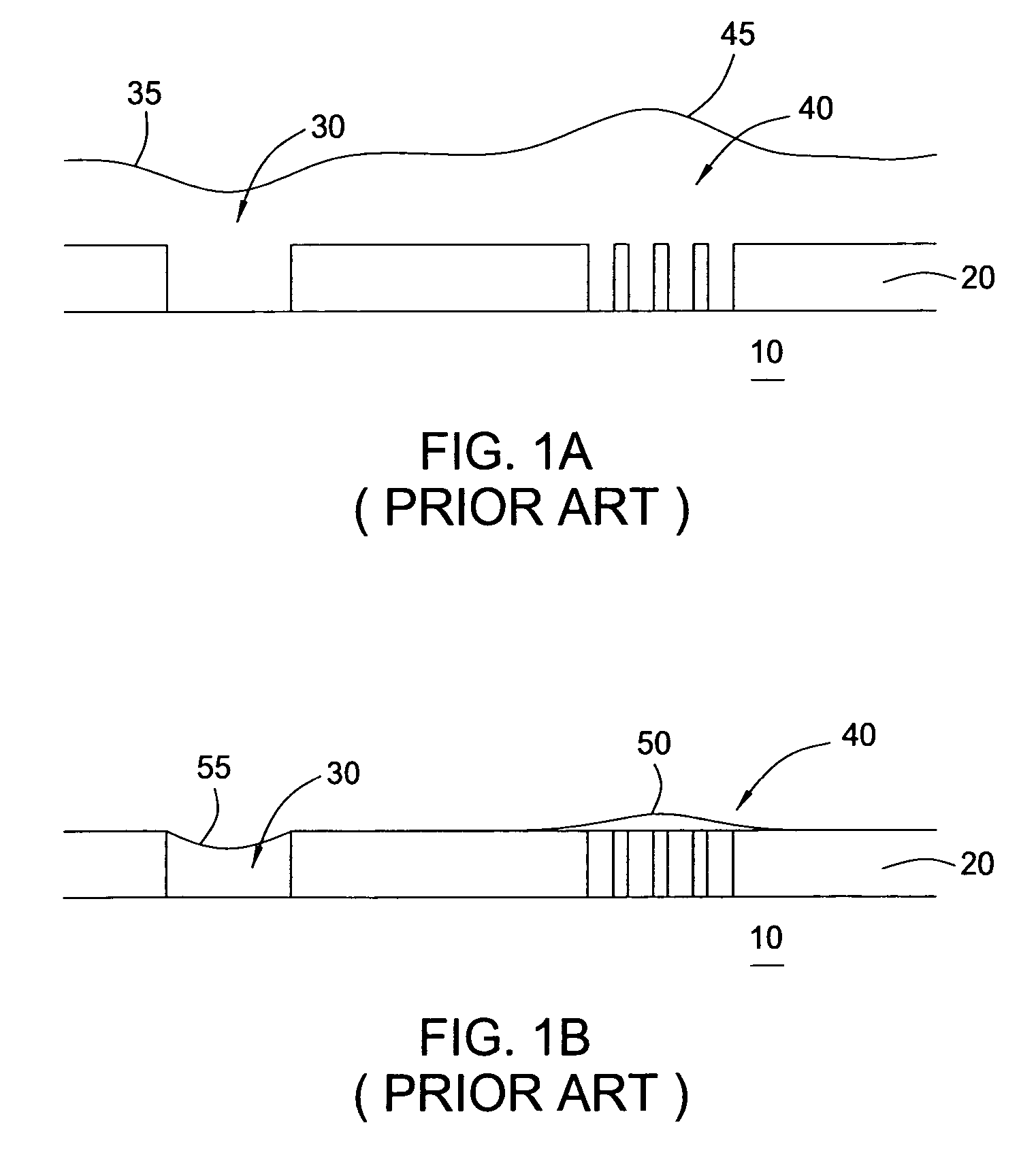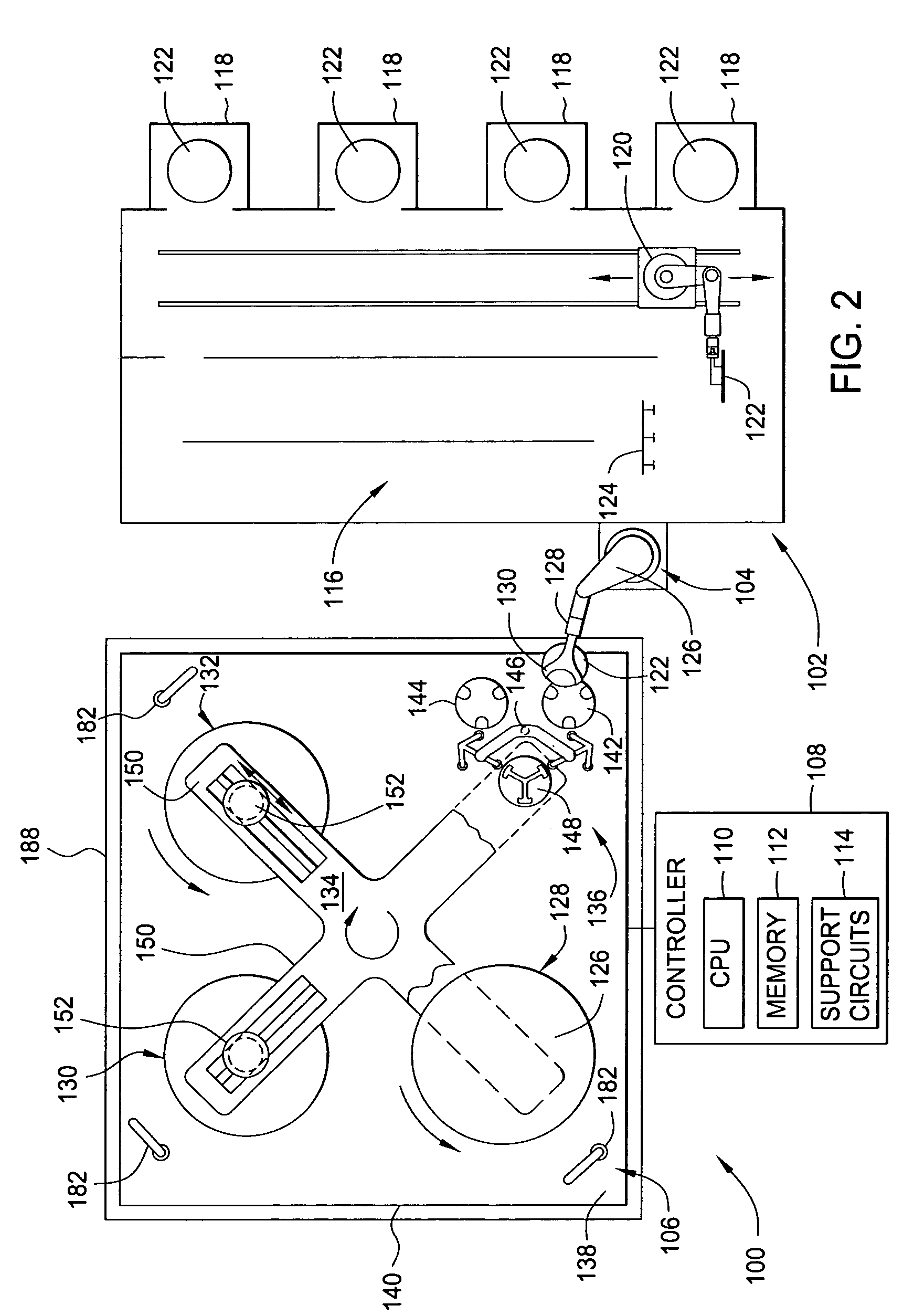Method and composition for polishing a substrate
- Summary
- Abstract
- Description
- Claims
- Application Information
AI Technical Summary
Benefits of technology
Problems solved by technology
Method used
Image
Examples
examples
[0157] The following non-limiting examples are provided to further illustrate embodiments of the invention. However, the examples are not intended to be all-inclusive and are not intended to limit the scope of the invention described herein.
example # 1
Example #1
[0158] A copper plated substrate was polished and planarized using the following polishing composition within a modified cell on a REFLEXION® system, available from Applied Materials, Inc. of Santa Clara, Calif. A substrate having a copper layer of about 11,500 Å thick on the substrate surface with a step height of about 6,000 Å was exposed to a polishing composition of:
[0159] about 6% by volume phosphoric acid;
[0160] about 2% by volume ethylenediamine;
[0161] about 2% by weight ammonium citrate;
[0162] about 0.3% by weight benzotriazole;
[0163] between about 2% and about 6% by volume of potassium hydroxide to provide a pH of about 5; and
[0164] deionized water, and
[0165] a polishing article was contacted with the substrate at about 0.2 psi at a bias of about 3 watts / volts was applied during the process. The substrate was polishing and examined. A protrusion height of about 4,000 Å was observed over wide feature definitions.
example # 2
Example #2
[0166] A copper plated substrate was polished and planarized using the following polishing composition within a modified cell on a REFLEXION® system, available from Applied Materials, Inc. of Santa Clara, Calif. A substrate having a copper layer of about 11,500 Å thick on the substrate surface with a step height of about 6,000 Å was exposed to a polishing composition of:
[0167] about 6% by volume phosphoric acid;
[0168] about 2% by volume ethylenediamine;
[0169] about 2% by weight ammonium citrate;
[0170] about 0.3% by weight benzotriazole;
[0171] between about 2% and about 6% by volume of potassium hydroxide to provide a pH of about 5; and
[0172] deionized water, and
[0173] a polishing article was contacted with the substrate at about 0.2 psi at a bias of about 3 watts / volts was applied by a pulse technique of 10 seconds on and 2 seconds off for 8 of cycles. The substrate was polishing and examined. A protrusion height of about 1,500 Å was observed over wide feature defin...
PUM
| Property | Measurement | Unit |
|---|---|---|
| Fraction | aaaaa | aaaaa |
| Fraction | aaaaa | aaaaa |
| Thickness | aaaaa | aaaaa |
Abstract
Description
Claims
Application Information
 Login to View More
Login to View More - R&D
- Intellectual Property
- Life Sciences
- Materials
- Tech Scout
- Unparalleled Data Quality
- Higher Quality Content
- 60% Fewer Hallucinations
Browse by: Latest US Patents, China's latest patents, Technical Efficacy Thesaurus, Application Domain, Technology Topic, Popular Technical Reports.
© 2025 PatSnap. All rights reserved.Legal|Privacy policy|Modern Slavery Act Transparency Statement|Sitemap|About US| Contact US: help@patsnap.com



